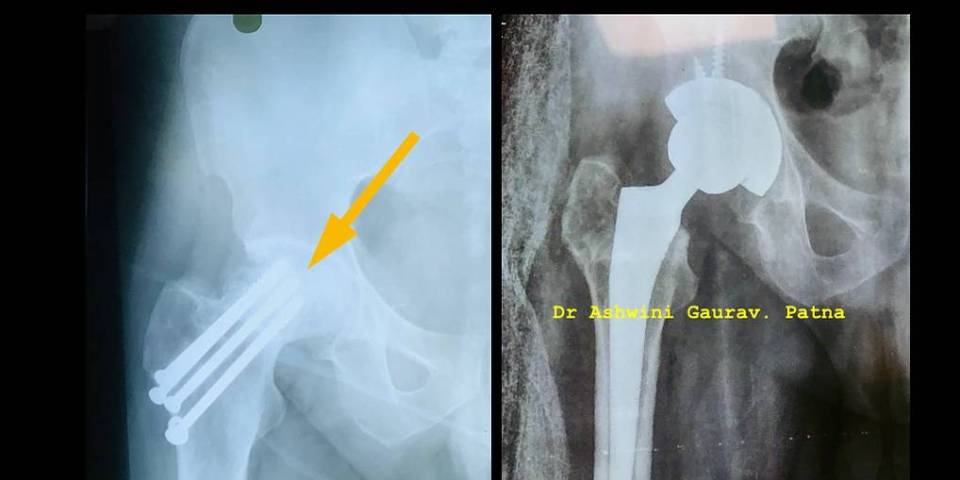
- 13/01/2021
- Dr. Ashwini Gaurav
- 0 Comments
- Uncategorized, Hip Replacement
Avascular Necrosis of Hip Joint
What is Avascular Necrosis or Osteonecrosis of hip joint?
The hip joint consists of a hip ball (Femoral Head) and a hip socket (Acetabulum). This condition is related to the ball part of the hip joint, where the ball ie, the femoral head becomes soft, crumbles and collapses and becomes flat. This irregularity also involves the socket part of the hip joint ie., acetabulum at later stages and the complete hip joint becomes painful, destroyed and useless because of arthritis.
An analogy can be given to a “Heart attack”. As when the blood vessels to the heart becomes blocked, it affects the function of the heart muscles and they began to die. This causes pain in the heart. So an avascular necrosis or osteonecrosis of hip joint is similar to a “heart attack” of the hip joint bone.
What are the symptoms of avascular necrosis of hip joint ?
During early phases there are no symptoms other than an occasional hip pain at certain positions of the hip. But as the condition progress, the hip becomes painful on all movements including walking and later on even at rest. Carrying out daily activities become difficult and the person becomes handicapped.
Who is at risk of avascular necrosis of hip joint?
Theoretically, everybody is at risk of avascular necrosis of hip joint as most commonly it occurs due to unknown causes. But certain condition increases the chances of getting affected, such as
- Trauma & hip fracture
- Long time steroid usage
- Alcohol usage
- Increased blood cholesterol
- Certain diseases such as HIV / Sickle Cell Disease / Gaucher’s disease etc
What tests are done to confirm the diagnosis ?
Avascular necrosis of hip joint can be confirmed by a routine X-rays in later stages, but in early stages it may require an MRI of the hip joint to confirm the diagnosis, as it is the most sensitive test for it. Some blood tests are also required to rule out any modifiable conditions which can be improved with medication.
What treatment options are available ?
Medical treatment can be tried in very early stages, or if an incidental hip necrosis is also found during MRI on the opposite side. The results are un-predictive and often require shifting to some surgical intervention.
Common surgical treatment options are “Hip Preservation” & “Hip Replacement”
1. Hip Preservation by Core Decompression & Bone Grafting

These can be done when the shape of the hip ball (femoral head) is maintained and not flattened. A small cut is made over the upper thigh skin and then the femoral head is drilled to the dead bone site. This reduces the pressure inside the hip ball and helps in removing the dead pieces of bone and replacing it with healthy bone taken from nearby site. This surgery has very good results if done at the right stage of the disease. After healing, the patient retains his / her god given hip joint and it can even last a lifetime.
2. Total Hip Replacement Surgery

This is a very successful surgery in later stages of the disease where all the dead and damaged bone parts are removed and replaced with an artificial metallic hip joint, which functions almost as the persons natural joint. Modern surfacing materials such as “Ceramics / Highly crossed linked polyethylene etc” can last for many years even in a young patient. A separate discussion on the material and designs of Total Hip Replacement Prostheses can be read here…
Uncommon surgical treatment options are:
- Vascularised fibular grafting
- Safe surgical dislocation & trap door / light bulb decompression and bone grafting
- Rotational osteotomies of hip

Dr Ashwini Gaurav specialises in all Hip Preservation and Replacement procedures for avascular necrosis of femoral head. Do contact Dr Ashwini Gaurav for any query regarding hip pain and avascular necrosis.
Clinic – G-94, PC Colony, Kankarbagh, Patna -20
Appointment – 9386737895

